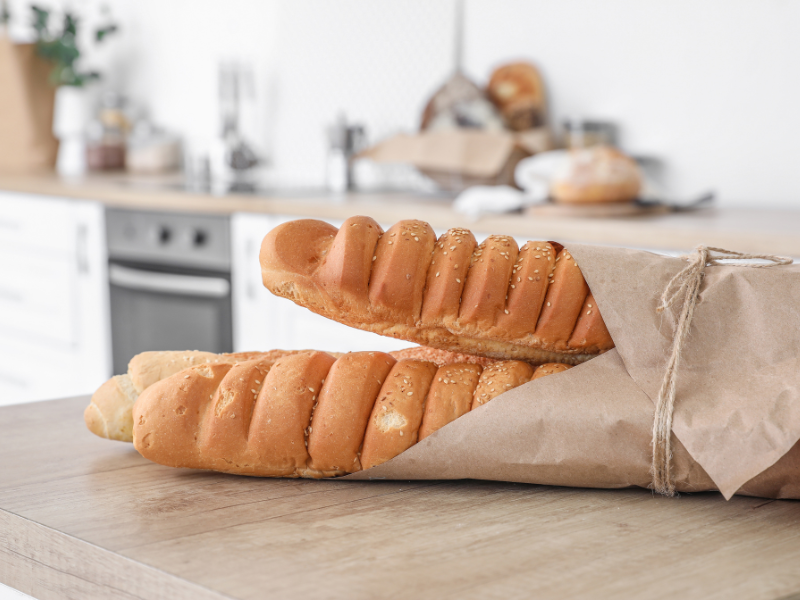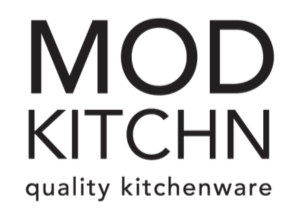
The Ultimate Guide to Bread Storage: Keep Bread Fresh Longer
Share
Bread is a beloved staple in many households, but keeping it fresh can be tricky. Whether you’re a home baker or you love picking up a loaf from your favorite bakery, knowing how to store your bread properly can make all the difference. In this comprehensive guide, we’ll share the best tips to keep your bread fresh and delicious for longer. We’ll look at how air and moisture affect bread, review popular storage methods, introduce you to our fantastic reusable bread bags, and provide essential storage tips. Let’s dive in and make sure your bread stays as fresh as the day it was made!

Understanding the Impact of Air and Moisture on Bread
Imagine you’ve just baked a perfect loaf of bread, golden and fragrant. You leave it on the counter, looking forward to enjoying it for days. But within a short time, it’s either dried out and hard or, worse, starting to mold. Why does this happen?
Air and moisture are the main culprits when it comes to ruining your bread. When bread is exposed to air, it quickly loses moisture, turning dry and hard—a process known as staling. This can happen surprisingly fast if the bread isn’t stored correctly. On the flip side, too much moisture can lead to mold growth, which not only affects the taste and texture but also makes the bread unsafe to eat.
The key to keeping your bread fresh is finding the right balance between air exposure and moisture control. By understanding these factors, you can ensure that your bread stays delicious and enjoyable for as long as possible.

Popular Bread Storage Methods: Pros and Cons
Linen Bags
Linen bags have a charming, old-fashioned appeal and are an eco-friendly option for storing bread. They’re breathable, which means they allow some air circulation that helps prevent mold. However, the downside is significant. Because they aren’t airtight, bread stored in linen bags can dry out much faster than with other storage methods. So, while they’re great for short-term storage or if you love the aesthetic, they might not be the best choice if you want to keep your bread fresh for several days.

Cotton Beeswax Bags
Cotton bags with a beeswax layer are a wonderful blend of breathability and protection, making them a popular choice for eco-conscious bread lovers. They offer a good seal to keep your bread fresh and can be reused multiple times, which is great for the environment. However, there's a catch. These bags require regular maintenance to keep them in good condition, and despite being reusable, they have a much shorter lifespan compared to other options. This means you'll need to replace them more frequently, which can be less convenient and more costly in the long run.
Beeswax Paper Wraps
Beeswax paper wraps are an eco-friendly choice that helps maintain your bread’s freshness while being reusable. They mold around the bread easily, creating a protective barrier. However, there are some downsides. Ensuring a proper seal can sometimes be tricky, which means your bread might not stay as fresh as you’d like. Additionally, these wraps don’t last forever and need to be replaced more frequently than other options, making them less effective for long-term storage. While they’re handy and environmentally friendly, they might not be the most durable or convenient choice for everyone.

Ziplock Bags
Ziplock bags are the epitome of convenience and are found in almost every kitchen. They seal tightly, which does a great job of keeping your bread moist and fresh. However, there are some significant downsides. The airtight seal can trap moisture inside, which can lead to mold growth if you're not careful. Additionally, while they're convenient, Ziplock bags are not environmentally friendly. They contribute to plastic waste and are typically single-use, making them a less sustainable choice for bread storage. So, while they’re handy, they might not be the best option for those looking to reduce their environmental footprint.
Bread Boxes
Bread boxes are a classic and stylish way to store your bread, providing a controlled environment that helps maintain freshness. These boxes allow just the right amount of airflow, essential for preventing mold while keeping your bread from drying out too quickly. The slight ventilation helps strike a balance, ensuring your bread stays fresh and delicious.
However, bread boxes come with a few downsides. If you live in a humid climate or don’t check the bread regularly, you might still find it going stale or, worse, getting moldy. It's important to monitor the conditions inside the box and the bread itself, as changes in temperature and humidity can affect how well the box preserves your bread. Additionally, bread boxes can be quite bulky, taking up valuable counter space. Unlike other storage options, you can't easily store a bread box away when it’s not in use. Despite these potential issues, many people find bread boxes to be a charming and effective storage solution that adds a touch of nostalgia to their kitchens.

Our Reusable Fresh Bread Storage Bags
Our reusable bread bags are thoughtfully designed to tackle common bread storage challenges head-on. Crafted from recycled materials, these bags are not only eco-friendly but also high-quality, breathable, and moisture-resistant. They feature a FreshShield liner, which, combined with the adjustable waterproof zipper and roll top, helps control air and moisture levels perfectly. This means your bread stays fresh, moist, and delicious for longer.
These bags are incredibly easy to use and maintain. Simply clean and reuse them multiple times, making them a cost-effective and sustainable choice. They are also easy to store when not in use and look beautiful on your counters, adding a touch of elegance to your kitchen. Additionally, our reusable bread bags work wonderfully for freezing bread, ensuring it stays fresh and ready to enjoy whenever you need it.
Unlike other storage methods, our reusable bread bags maintain the bread's natural moisture balance, effectively preventing both staling and mold growth. With our bags, you can enjoy the perfect loaf every time, knowing you’re also making a positive impact on the environment.



Additional Tips for Optimal Bread Storage
1. Allow Fresh Bread to Cool Completely Before Storing
There's nothing quite like the smell of freshly baked bread filling your home. However, before you tuck that warm, delicious loaf away, it’s important to let it cool down completely. Storing bread while it’s still warm can cause condensation inside the container, creating a perfect environment for mold to develop. Letting your bread cool not only helps retain its wonderful texture and flavor but also prevents any unwanted moisture buildup. So, be patient and let your bread cool – it’s a small step that makes a big difference in keeping it fresh and tasty.

2. Minimize Air Exposure Around Bread
To keep your bread fresh and delicious, it’s important to minimize the amount of air in the storage container. When you’re using bags or wraps, try to squeeze out as much air as possible before sealing them. This simple step helps reduce the risk of your bread drying out and becoming stale. By limiting air exposure, you can enjoy soft, flavorful bread for longer.
3. Refrigerate Bread After Five Days for Longer Freshness
If you plan to keep your bread for more than five days, it's a good idea to pop it in the refrigerator after the fifth day. While refrigeration can slightly change the texture of your bread, it does wonders for extending its shelf life and preventing mold. This way, you can enjoy your bread for longer without worrying about it going bad. It's a simple trick to keep your bread fresh and ready to enjoy whenever you want.
4. Utilize the Freezer for Long-Term Bread Storage
Freezing bread is a fantastic option for keeping it fresh over the long term. To make the most of your freezer space and ensure easy access, slice the bread before freezing. This way, you can thaw just what you need without defrosting the entire loaf. Be sure to use airtight bags or containers to prevent freezer burn and maintain the bread's freshness.
If you prefer to freeze whole loaves, that works too! When you're ready to enjoy your bread, thaw the whole loaf by leaving it at room temperature for a few hours, or you can place it in the oven at a low temperature (about 300°F) for 10-15 minutes to refresh it. This method ensures you always have fresh bread on hand, ready to enjoy whenever you want.
Wrapping It Up...
By following these tips and using the right storage methods, you can keep your bread fresh and tasty for longer. Exploring different bread preservation methods can help you find the best approach for your needs. Whether you decide to use our reusable bread bags or another storage option, knowing how to balance air exposure and moisture control is crucial for maintaining your bread's quality. With a little care and the right techniques, you can enjoy delicious, fresh bread every day.
